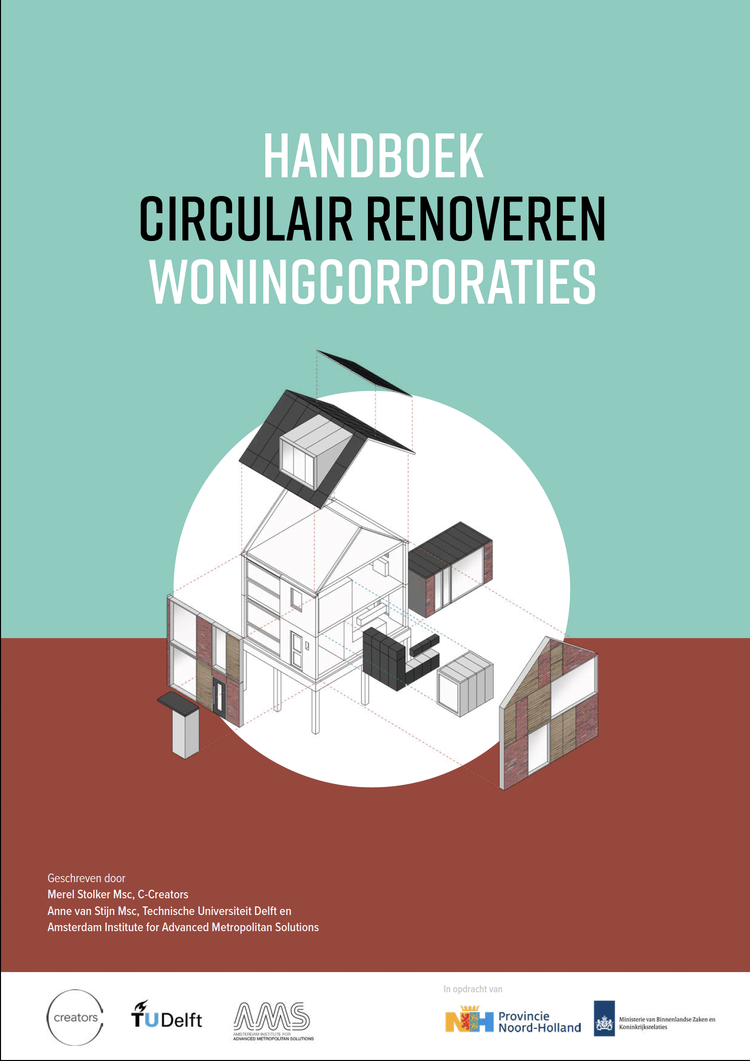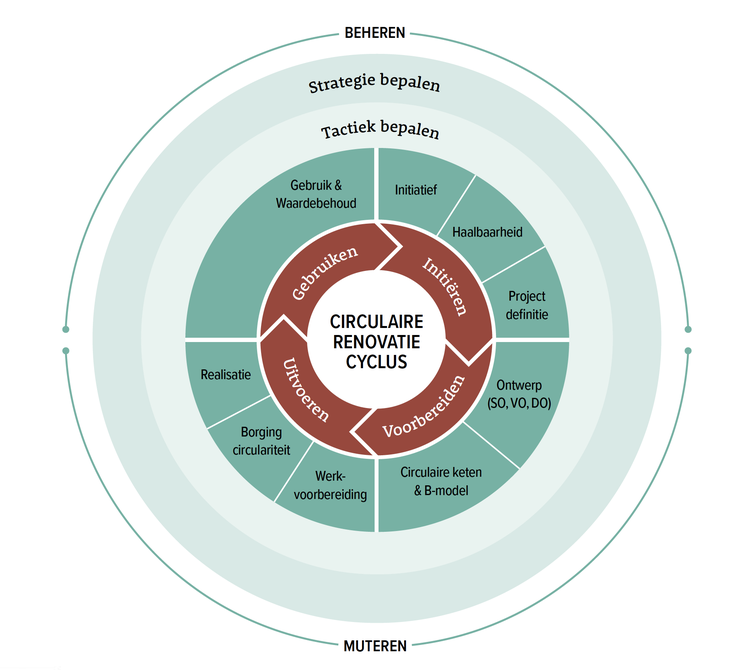Circularity as a means for a sustainable built environment
In recent months, the Province of Noord-Holland, the Ministry of the Interior and Kingdom Relations (BZK) in collaboration with Merel Stolker (Construction specialist, C-Creators) and Anne van Stijn (researcher, TU Delft) worked on a manual for housing corporations about circular renovation. With this manual, they want to embed circular impact in the renovation process - circularity is not the goal, but a means to achieve a sustainable built environment.
“This handbook is aims to bundle and advance the knowledge related to circular renovation. It focuses on integrating circular renovation into the existing renovation process.”
Merel Stolker | Co-author and Construction Specialist at C-Creators


Handbook Circular Renovation
Handbook for circular renovation housing corporations
The handbook describes a process for circular renovation for housing corporations, explaining who should be involved in which step, which decisions are made and special points to pay attention to. This is illustrated by means of a number of inspiring examples.
The handbook also provides a clear definition of circular renovation: maintaining, renewing and reusing building (parts) without unnecessarily depleting natural resources, polluting the living environment and harming the ecosystem. This can be done on the basis of the well-known raw material principles - narrowing the loop, slowing the loop and closing the loop - which C-creators have translated into three building principles: minimize, utilize the available and use the reusable. Don't just look at the source of circular material, but also at the end of life.

Handbook Circular Renovation: Circular Renovation Cycle
The first chapters deal with what the circular economy and circular renovation entail. The book is then divided into various chapters that take the housing corporation and supply chain partners along in the process steps of circular renovation: from strategy, to design, to realization, use and value retention. At each step, it is explained what can be done in a circular manner and how this can be considered. The steps are illustrated on the basis of practical examples. The book also includes the experiences from the REHAB and CIK research (development and testing of circular components for home renovation).The manual is intended as a starting document, an invitation for housing corporations and supply chain partners to get started themselves.
“Replacing non-circular materials with reused or bio-materials is one way to make quick circular steps in projects. But this is not enough! In addition, apply circular design principles to narrow, slow down and close loops. Work with the supply chain to create a circular supply chain and business model as well. To arrive at an ideal and feasible solution, it is important to work together across projects to create reproducible, circular renovation solutions.”
Anne van Stijn
Researcher Housing Management
The handbook was written by Merel Stolker (C-creators) and Anne van Stijn (TU Delft, AMS Institute) on behalf of the province of Noord-Holland and the Ministry of the Interior.

